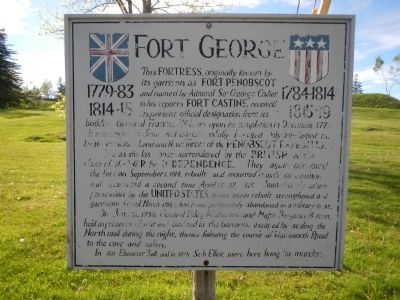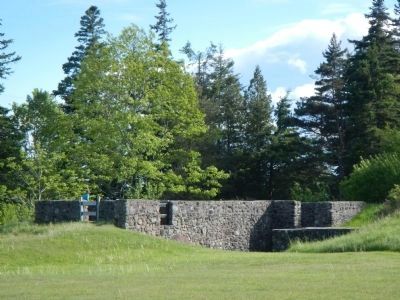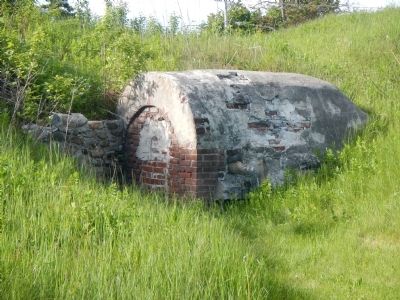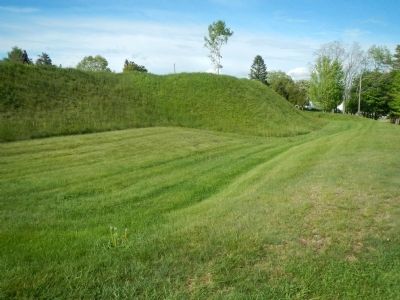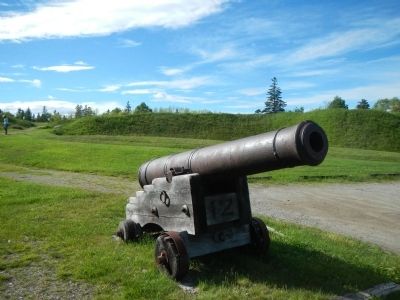Castine in Hancock County, Maine — The American Northeast (New England)
Fort George
On June 18, 1780, General Peleg Wadworth and Major Benjamin Barton, held as prisoners of war and confined in the barracks, escaped by scaling the North wall during the night, thence following the course of Wadsworth Road to the cove and safety.
In 1811 Ebenezer Ball, and in 1825 Seth Elliot, were here hung for murder.
Topics. This historical marker is listed in these topic lists: Forts and Castles • War of 1812 • War, US Revolutionary. A significant historical year for this entry is 1779.
Location. 44° 23.391′ N, 68° 48.297′ W. Marker is in Castine, Maine, in Hancock County. Marker is on Battle Avenue (Maine Route 166) near Pleasant Street, on the right when traveling south. Touch for map. Marker is at or near this postal address: 124 Battle Avenue, Castine ME 04421, United States of America. Touch for directions.
Other nearby markers. At least 8 other markers are within 8 miles of this marker, measured as the crow flies. Burial Place of British officers, (within shouting distance of this marker); Fort George & the Penobscot Expedition (within shouting distance of this marker); Line of Argyle Street (approx. 0.4 miles away); Fort Pownall (approx. 5.4 miles away); Fort Pownall, 1759-1775 (approx. 5.4 miles away); Fort Point State Park (approx. 5.4 miles away); The Home of a Hero / La maison d'un héros (approx. 7.2 miles away); The Growth of Ship Building: Isaac Carver / Le développement des chantiers navals : Isaac Carver (approx. 7½ miles away). Touch for a list and map of all markers in Castine.
Also see . . . Fort George (Castine, Maine) - Wikipedia. Fort George (formerly Fort Majebigwaduce or Fort Castine) was an earthworks fort built by Great Britain to defend its new founded colony, New Ireland, during the American Revolutionary War. The fort is most well known for helping to defeat the American patriot Penobscot Expedition's attempt to reclaim the territory. (Submitted on September 15, 2014, by Barry Swackhamer of Brentwood, California.)
Credits. This page was last revised on June 16, 2016. It was originally submitted on September 15, 2014, by Barry Swackhamer of Brentwood, California. This page has been viewed 560 times since then and 35 times this year. Photos: 1, 2, 3, 4, 5. submitted on September 15, 2014, by Barry Swackhamer of Brentwood, California. • Bill Pfingsten was the editor who published this page.
